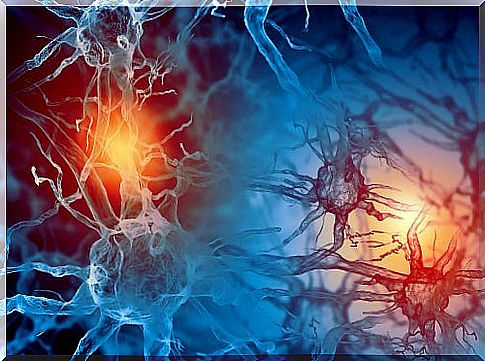Diazepam: What It Is And What It Is Used For
Diazepam is a medicine from the group of benzodiazepines. It acts on the central nervous system with anxiolytic, sedative and anticonvulsant effects.
It is long-acting and its use is widespread in the treatment of anxiety, panic attacks, states of agitation, epileptic seizures, and febrile disorders. On the other hand, it is also used as a muscle relaxant in some cases.
Below we will tell you more about this drug that you may have ever heard of.
How does diazepam work?

Diazepam is a central nervous system depressant, that is, it reduces the activity of neural circuits. It acts mainly on the limbic system, thalamus and hypothalamus.
This depressant action is due to the fact that diazepam enhances the action of an inhibitory neurotransmitter called gamma-aminobutyric acid (GABA).
Neurotransmitters are chemicals that participate in neuronal communication. They do this by connecting neurons with others and facilitating the transmission of signals necessary for the proper functioning of the nervous system. In other words, when one neuron receives a signal, it transmits it to the next by releasing a neurotransmitter. This produces two changes in the second neuron:
- Activation. Whether the neurotransmitter is excitatory or activating, causing the signal to continue to transmit.
- Inhibition. If the neurotransmitter is inhibitory, causing the transmission of the signal to cease.
Therefore, diazepam, along with other benzodiazepines, will have a depressant or inhibitory action on the central nervous system by promoting the action of the neurotransmitter GABA.
The levels of this neurotransmitter are abnormally low in some psychiatric conditions such as depression, anxiety and epilepsy, from which the anxiolytic and anticonvulsant effects of benzodiazepines such as diazepam can be deduced.
Administration of diazepam

Diazepam is a long-acting benzodiazepine, its half-life is about 30-60 hours. It can be administered in different ways:
- Oral route, with a very fast absorption. In medicines used orally, it must be taken into account that the action is not instantaneous. It begins when the drug is absorbed in the digestive system, mainly in the stomach and first sections of the intestine.
- Rectal use, useful in the form of microenemas (liquid solution that is administered rectally). It is a widely used form in pediatric seizures given its rapid action.
- Intravenous route, with a very fast action, approximately 5 minutes after administration.
- Intramuscular route, less and less used since absorption is slow when administered by this route.
Once in the blood, it is widely redistributed throughout all tissues
It crosses the blood-brain barrier that separates the nervous system from the rest of the body, hence it can be used for nervous system disorders such as anxiety or epilepsy.
It also crosses the placental barrier reaching the fetal tissues, a fact that must be taken into account if it is administered in pregnant women and during lactation, since it also reaches breast milk.
Diazepam metabolism is mainly hepatic, so care must be taken in its administration together with other hepatic metabolism drugs or with alcohol.
Indications of diazepam

- Treatment of anxiety, panic attacks and states of agitation: it is used mainly orally, with different doses depending on the age of the patient and the degree of anxiety. If this is very intense, you can resort to intravenous administration.
- Treatment of withdrawal. It can be caused by an addiction to alcohol or by addiction to benzodiazepines. The intravenous route is used, sometimes high doses are necessary in the first days of abstinence. It also appears in the treatment of delirium tremens , a condition that appears in severe cases of ethyl alcohol withdrawal syndrome with hallucinations and other distortions of reality.
- Muscle relaxant: it is used orally or intravenously for muscular contractures of different kinds. Included here are those pathologies that occur with reflex contractures, in which the muscle remains continuously contracted due to its defense mechanism.
- Anticonvulsant: benzodiazepines are one of the groups of drugs known as antiepileptics, used effectively in the treatment of epilepsy. They are also used in non-epileptic seizures, such as febrile seizures or drug-induced seizures.
- In medical procedures that require sedation, such as endoscopy, due to its hypnotic effect.
To conclude, we must bear in mind that there are also some contraindications to its use. It is not recommended in patients with liver or respiratory problems.
Currently, a large number of patients take diazepam on a regular basis for quite long periods of time to treat anxiety. We must not forget that it is a psychotropic drug and that it is not without significant adverse effects.
Like the rest of drugs, it should only be administered under medical prescription and following the specialist’s instructions.








